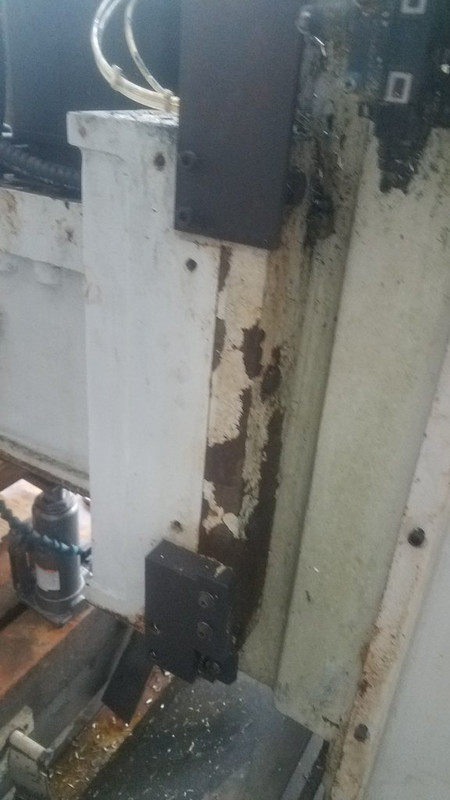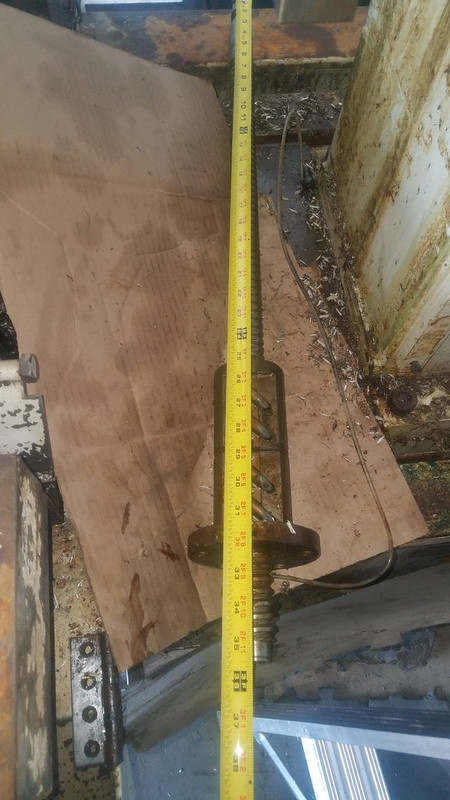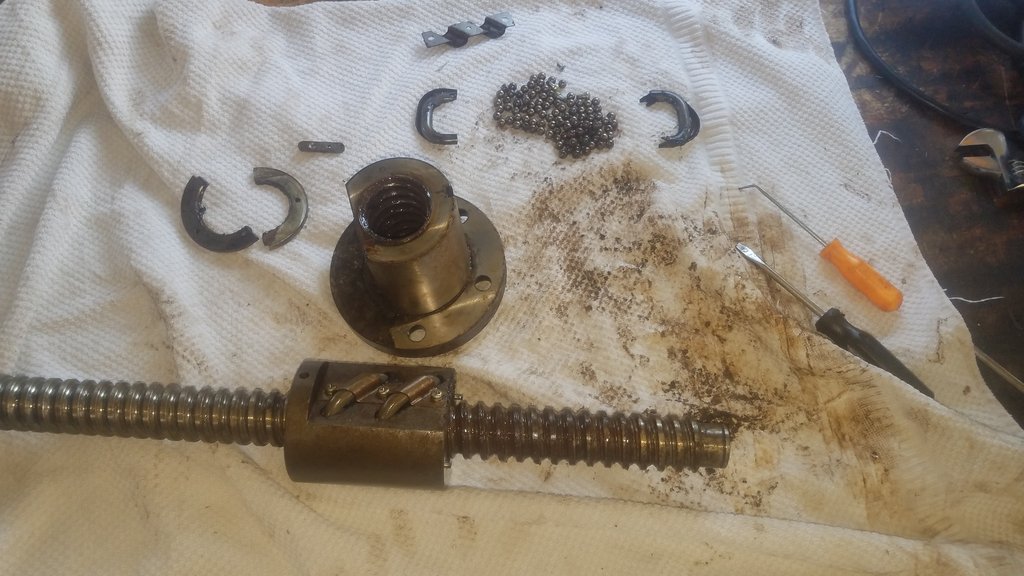Kiwa Excel 510
The machine was sitting outside for about 10 months. I had it under a tarp, but I had the Z motor taken off.
A few days ago I decided to bring the machine inside and begin its TLC process. When I had shut it down 10 months ago X, Y, and Z axis jogged fine.
Now the Z axis ballscrew wont move. I have the motor off and thrust bearings loose (they turn). So basically I have just the ballscrew and its nut so its isolated to those things. The machine has a counterweight so I am 99% sure there is no brake buried somewhere in the lower casting.
The ballscrew is very difficult to turn by hand. I have to grip it with a towel and twist hard and it moves but its very notchy and I dont think I should be doing that.
Two things I noticed:
a) inexplicably the lube lines had water in them!! I am not sure how that happened. There is no obvious way for water to get in there except going backwards through the lines from outside, due to condensation or splashing from rain under the tarp?
b) X and Y axis work okay
So..I guess rust is the issue here. What can I do? I like this machine and want to fix it. I've pumped PB blaster directly into what I think is the ballnut lube tube and I've sprayed the chip guard on the top of the ballnut with plenty of PB blaster and WD40.
I'd like to get the ballnut/screw out but from the looks of it I guess I would have to remove the head? This ways are square. I do have a cherry picker handy and in theory I should be able to come up with a way to safely manipulate the head in the air.
I'm not actually sure how the head comes off. These are box ways (square?) and I guess you actually unbolt sections of the head casting that grab the ways? I'm not familiar.
Any help greatly appreciated!
Also been thinking of hooking up a pump with evaporust and pumping it continuously through the ballnut but not sure how I would catch it on the output...
The machine was sitting outside for about 10 months. I had it under a tarp, but I had the Z motor taken off.
A few days ago I decided to bring the machine inside and begin its TLC process. When I had shut it down 10 months ago X, Y, and Z axis jogged fine.
Now the Z axis ballscrew wont move. I have the motor off and thrust bearings loose (they turn). So basically I have just the ballscrew and its nut so its isolated to those things. The machine has a counterweight so I am 99% sure there is no brake buried somewhere in the lower casting.
The ballscrew is very difficult to turn by hand. I have to grip it with a towel and twist hard and it moves but its very notchy and I dont think I should be doing that.
Two things I noticed:
a) inexplicably the lube lines had water in them!! I am not sure how that happened. There is no obvious way for water to get in there except going backwards through the lines from outside, due to condensation or splashing from rain under the tarp?
b) X and Y axis work okay
So..I guess rust is the issue here. What can I do? I like this machine and want to fix it. I've pumped PB blaster directly into what I think is the ballnut lube tube and I've sprayed the chip guard on the top of the ballnut with plenty of PB blaster and WD40.
I'd like to get the ballnut/screw out but from the looks of it I guess I would have to remove the head? This ways are square. I do have a cherry picker handy and in theory I should be able to come up with a way to safely manipulate the head in the air.
I'm not actually sure how the head comes off. These are box ways (square?) and I guess you actually unbolt sections of the head casting that grab the ways? I'm not familiar.
Any help greatly appreciated!
Also been thinking of hooking up a pump with evaporust and pumping it continuously through the ballnut but not sure how I would catch it on the output...










